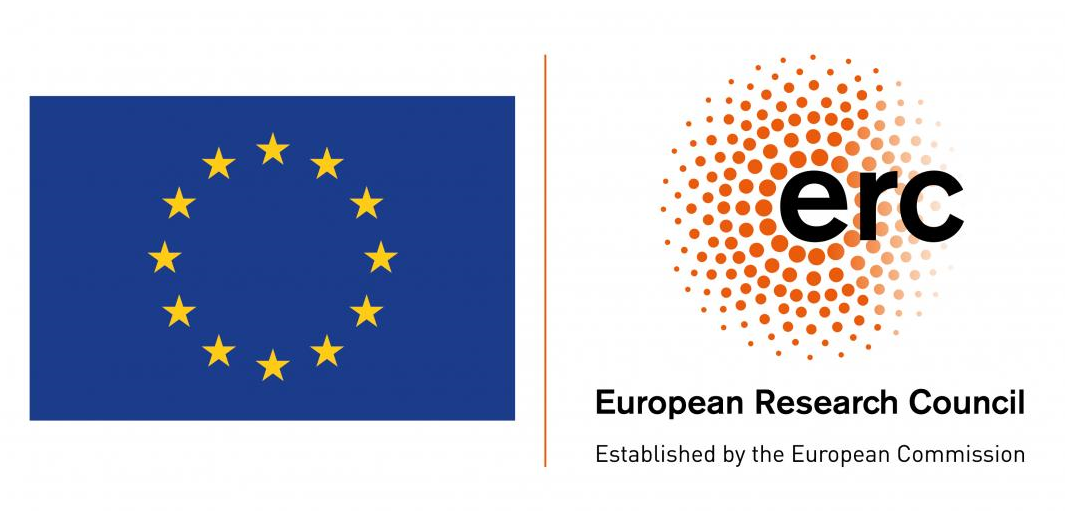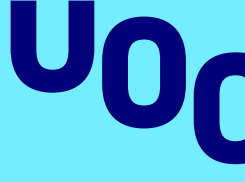UOC researcher awarded prestigious European Research Council Starting Grant
What is your academic background?
I studied Spanish Language and Literature. Then, I wrote a thesis on reception studies, literature, etc. But after that, after I received my doctorate, I didn’t follow the sort of career path typical among my fellow students, for example working in publishing or as secondary school teachers.
During the final year of my thesis, I came into contact with historians and sociologists and, since then, my research has leaned much more towards sociology because I’m very interested in looking at the ways in which books circulate and the determining economic, political, social and cultural factors that influence that circulation, as well as the role of agents playing a part in these processes, such as translators, publishers, book fairs and national institutes.
What are your research group’s areas of expertise?
My research group’s expertise lies in combining quantitative analyses with qualitative analyses, which is part of my professional skill set; as a linguist I have extensive experience analysing historical texts and objects. And I’ve also gone on to develop a lot more expertise in quantitative analysis, data visualization and network analysis. Everyone who works with me in the team also combines these two perspectives. And there’s also an important sociological perspective. Recently we’ve been analysing the circulation of books, not from the national standpoint that has been typical traditionally, but from a transnational or global point of view. This was the starting point for the research group I lead, which is called GlobaLS, and this is exactly what its goal is: to analyse transnational cultural processes from a global perspective – not looking at everything, but rather looking from above – processes that could relate to book circulation, translations, novels or literary ecosystems.
One of your main research projects is MapModern - Social Networks of the Past. What is its objective?
The MapModern project has that same aim of combining quantitative and qualitative analyses, and seeks to refute the idea of innovative centres and imitative peripheries, and the common perception that modernity in the first half of the twentieth century was principally centred around the Francophone, Germanic and Anglo-American spheres of influence. Looking at studies already conducted in this area, there were cases showing that this wasn’t the case; that in the Hispanic domain there were agents – intellectuals, writers, translators, etc, whose lives involved a variety of roles and professions – whose creative agency played a key role in developing modernity.
Analysing the influence and roles of these Ibero-American agents enabled us to question and redefine the hypothesis that modernity spread via certain centres – Paris is the most widely-recognized – not other channels such as Barcelona, Madrid, Buenos Aires and other smaller cities such as Puno.
The centre-periphery debate could be discussed at length, but now we can say conclusively whether certain places were indeed peripheral or in fact not so much so, and we can demonstrate this empirically, on a large scale and using big data.
What is the significance of the European Research Council funding?
The Ministry-funded Mapping Modernity project was where it started. It was a lab where I already had the idea of the ERC project in my head, so I wanted to carry out tests to look at the methodology and see how we could take it forward, where I would need to focus in order to analyse all these connections. The Ministry made that possible with their funding. Then, as part of a BBVA-funded project, ‘Translation and market’, which focused on the period 1900–1945, and working with Barcelona-based company 300.000 Km/s and its director, Pablo Martínez, we conducted experiments to quantitatively assess how many books had been published in Spanish during that time.
And so, with that snapshot, we’re able to further explore and refine it in specific cases. The ERC project follows those two threads and geographically extends the analysis. Now we’re studying not only Spain and Hispanic America, but also Portugal and Brazil, because despite being a neighbour to the Portuguese-speaking world, we’ve sometimes ignored each other and don’t have the depth of knowledge we’d like. Obviously there are numerous connections between these two worlds, so we’re trying to expand our geographical scope, and to extend the period of time we’re covering. In this case, in the ERC project, the reference points are 1898 – the loss of Cuba as a colony – and the Cuban revolution in 1959.
We’re exploring four main areas: the first involves analysing the networks of all these Ibero-American agents through international organizations, such as the precursor to UNESCO. The second looks at journal translations, where there’s a huge knowledge gap in translation studies. We have a lot of information about books – translations of books – but not about journal translations. We’ve tried to identify methodologies that allow us to analyse these journals on a large scale. The third focal point is Ibero-American women, because if, as we were saying earlier, the influence of the Hispanic or Ibero-American area has always been considered peripheral – a perception we want to change – then Ibero-American women are on the periphery of the periphery. So this is why it’s time to highlight the work done by all these women, in the Argentinian association I mentioned earlier, founded by Elena Sansinena de Elizalde, an exceptional woman who brought to the Buenos Aires of the interwar period the likes of Marinetti, Waldo Frank, Keyserling, Le Corbusier, organizing lecturers and art exhibitions on all the highlights of her time. And the fourth focus is the role of all these Ibero-American agents in relation to the new media of that time, which were of course cinema and radio. We want to find out about the film critics writing in the publications we’ll be studying, and about the organizers of film clubs that screened films like Luis Buñuel’s Un Chien Andalou, films in the avant-garde, but not only those in the avant-garde, also the blockbusters of the era.
Will a lack of digitization be a handicap?
While a lot of content has been digitized, the main problem is that in these digitization processes the generation of scientific knowledge has not always been a factor. For example, Google Books has digitized millions and millions of books, but we’re only able to consult them. Different content has been digitized using different parameters, making it hard to standardize or compare them.
How can we defend the scientific authenticity of research in the humanities?
Firstly, speaking for all of us who do research work in the humanities, we certainly need to make efforts to better explain what we do, and to establish dialogues that can be more productive from an interdisciplinary perspective. Obviously, I don’t mean that we shouldn’t work within our disciplines, and it is positive to have those, but perhaps we have come to a point where society is demanding greater dialogue, between researchers from different disciplines, and to engage the wider public. So on our part, efforts are clearly needed in terms of projecting our work publicly, and in terms of forming closer, more meaningful collaborations with researchers from other disciplines.
We don’t do analyses or research on vaccines, or the human genome, or astrophysics; we don’t discover new planets or new stars. But we do work towards making society – or our community – a community in which there is more critical thinking and more tolerance through culture; because ultimately culture is our medium. We’re cultivating new values, contributing to education and offering a type of research that I think is of key importance. I believe the research we’re working on also has a very significant social impact. By providing new data relating to the knowledge we’re lacking, we’re helping to reduce the knowledge divide, in poorer countries in particular; many countries are unable to protect their cultural heritage, but we’re doing what we can to make this possible for them.
From that point of view, I believe that the research we do is scientific. It’s also extremely important because it’s research in which we try to ensure a highly rigorous and systematic approach, and in our case there is also an interdisciplinary element, entailing a great deal of interaction and with the so-called ‘hard sciences’, because we’re speaking to physicists and digital scientists who are also collaborating in our project, and to other agents who work in different disciplines that in theory are far removed from ours.
Do you have any recommendations that could help us to understand certain aspects of your research better?
A film I saw recently called Stefan Zweig: Farewell to Europe, which – despite for me having certain shortcomings as a film – provides a good insight into the context of my research. It’s the story of the writer Stefan Zweig and describes his journey as he flees Nazi Germany for Latin America. In Argentina he meets Victoria Ocampo, another prominent female figure, who is better known than Elena Sansinena de Elizalde, who I mentioned before, but certain parts of her life have perhaps been overlooked and we’d like to bring them to light.
I can also recommend two books. One is called Macroanalysis, Digital Methods and Literary History, by American researcher Matthew Jockers, a data and computer scientist who has also been a pioneer in the use of big data applied to literary and historical objects – alongside Ted Underwood, Franco Moretti and Andrew Piper. Another more general interest book – perhaps for other researchers who aren’t necessarily in humanities – is called Knowledge Machines. It examines digital transformations in social sciences and humanities. It’s by Ralph Schroeder and Eric Meyer, who work at the Oxford Internet Institute at the University of Oxford, and was published in 2015. Knowledge Machines, it’s very good.
Diana Roig-Sanz project has received funding from the European Research Council (ERC) under the European Union’s Horizon 2020 research and innovation programme (grant agreement No 803860).


